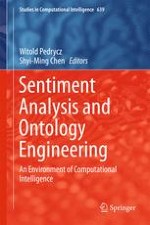2016 | OriginalPaper | Buchkapitel
Hyperelastic-Based Adaptive Dynamics Methodology in Knowledge Acquisition for Computational Intelligence on Ontology Engineering of Evolving Folksonomy Driven Environment
verfasst von : Massimiliano Dal Mas
Erschienen in: Sentiment Analysis and Ontology Engineering
Aktivieren Sie unsere intelligente Suche, um passende Fachinhalte oder Patente zu finden.
Wählen Sie Textabschnitte aus um mit Künstlicher Intelligenz passenden Patente zu finden. powered by
Markieren Sie Textabschnitte, um KI-gestützt weitere passende Inhalte zu finden. powered by
